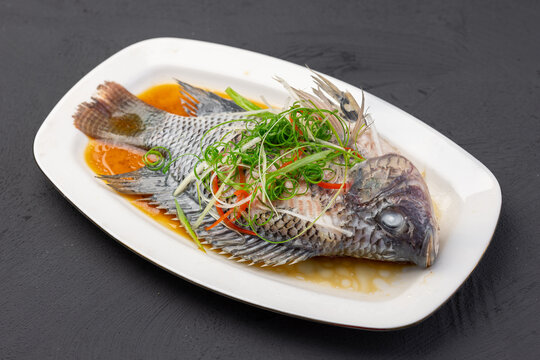|
Tilapia, a top Fish of Export to USA in ChinaTilapia, a cheap tropical fish, may ring a bell for many, but its "presence" in China's domestic market is surprisingly low. Despite its humble price, it is truly a "top student in foreign trade" within China's aquatic industry.
At home, you might dismiss tilapia as too ordinary, but abroad—especially in the U.S.—it has become a "staple" on American dinner tables. The confidence of Chinese tilapia doesn’t come from empty boasts, but from ship after ship of export data.
Native to Africa, tilapia is highly adaptable, grows rapidly, is easy to farm, and has strong disease resistance. As early as 1976, the UN Food and Agriculture Organization (FAO) listed it as a fish species to be globally promoted for farming. Today, tilapia has been introduced from Africa to over 100 countries worldwide, and the world’s largest producer is none other than China. Interestingly, the U.S. first introduced tilapia farming, later spreading it to Singapore and Vietnam before China gradually began its own cultivation. Chinese tilapia has since overtaken others as a latecomer. Compared to other introduced fish species, tilapia has a unique trait in the consumer market: it has never won the "domestic war" but has never lost the "foreign war." 1. "Never Won the Domestic War" Tilapia has minimal sales in China’s domestic market. In fact, it’s rare to spot tilapia in the aquatic sections of major supermarkets across the country. Simply put, Chinese consumers "don’t favor" tilapia, and few choose to eat it.
2. "Never Lost the Foreign War" With a global annual production of about 6.59 million tons, China contributes around 1.6 million tons of tilapia, mainly from provinces like Guangdong, Hainan, and Guangxi. With low domestic consumption, where does all this tilapia go?
Primarily to export markets.
Additionally, tilapia is incredibly cheap: China’s procurement prices have long stayed below 6 yuan per half-kilogram (0.5kg), often around 8 yuan. Exported to the U.S., it’s far cheaper than other fish, making it a go-to source of affordable protein. Plus, many American fast foods like hamburgers include "fish patties," frequently made from tilapia. While such products exist in China, per capita consumption of fish-based fast food is low, whereas in the U.S., they’re staple items. The prevalence of pre-made meals abroad also makes tilapia an ideal raw material—factors that fuel its global popularity.
3. The Double-Edged Sword of Success China’s tilapia industry has thrived in foreign trade, but this success carries a warning: over-reliance on overseas markets.
In recent years, foreign trade has been fraught with uncertainties. While tilapia can be delicious when cooked Chinese-style, it’s often unnecessary for home cooking. Its true value shines in cost-effective pre-made dishes. As the industry grows, balancing foreign trade dominance with domestic market development will be key to weathering future storms.
In short, tilapia may be a underdog at home, but it’s a global champion abroad—a paradox that defines its unique role in China’s aquatic landscape.
|



